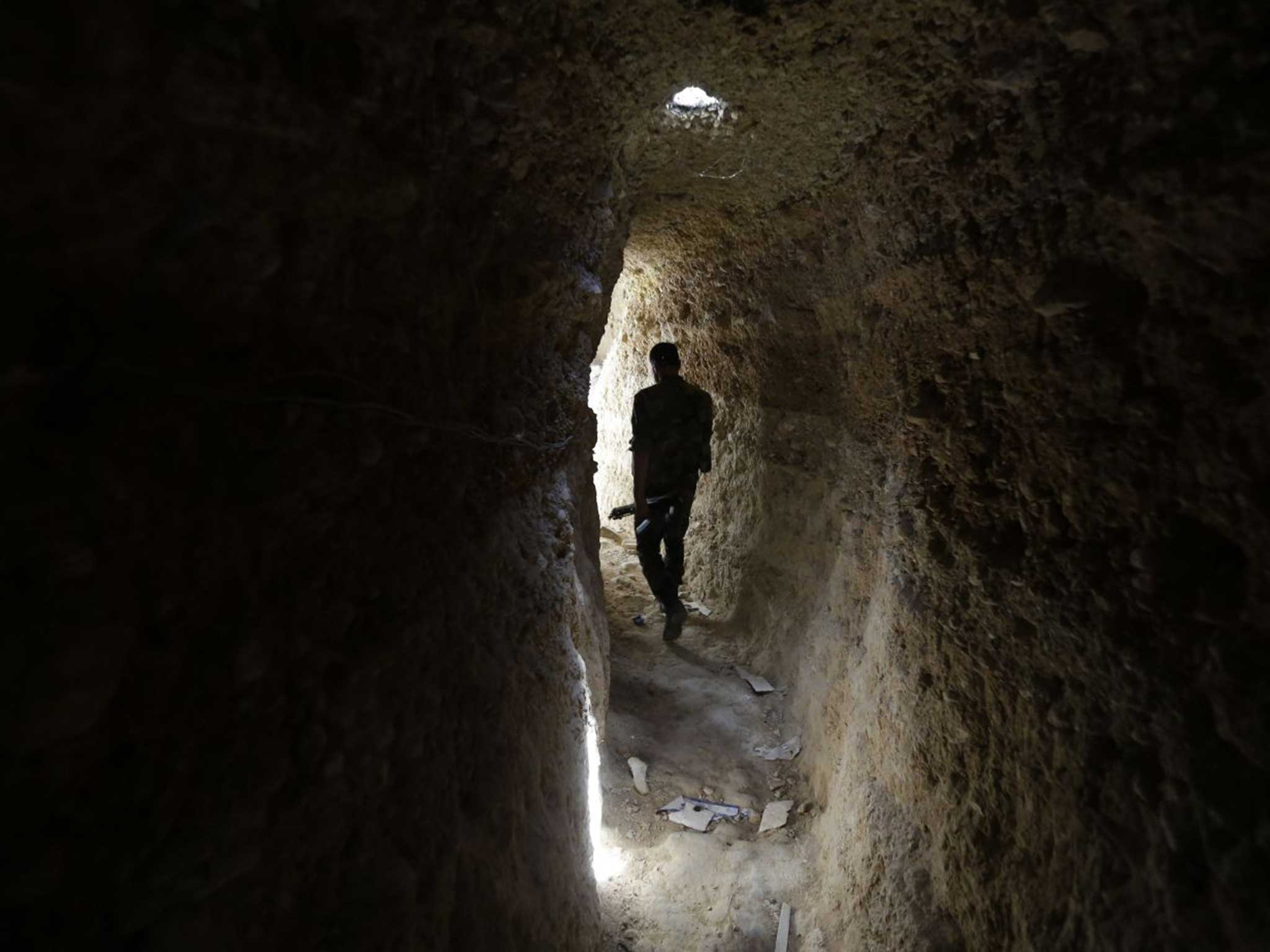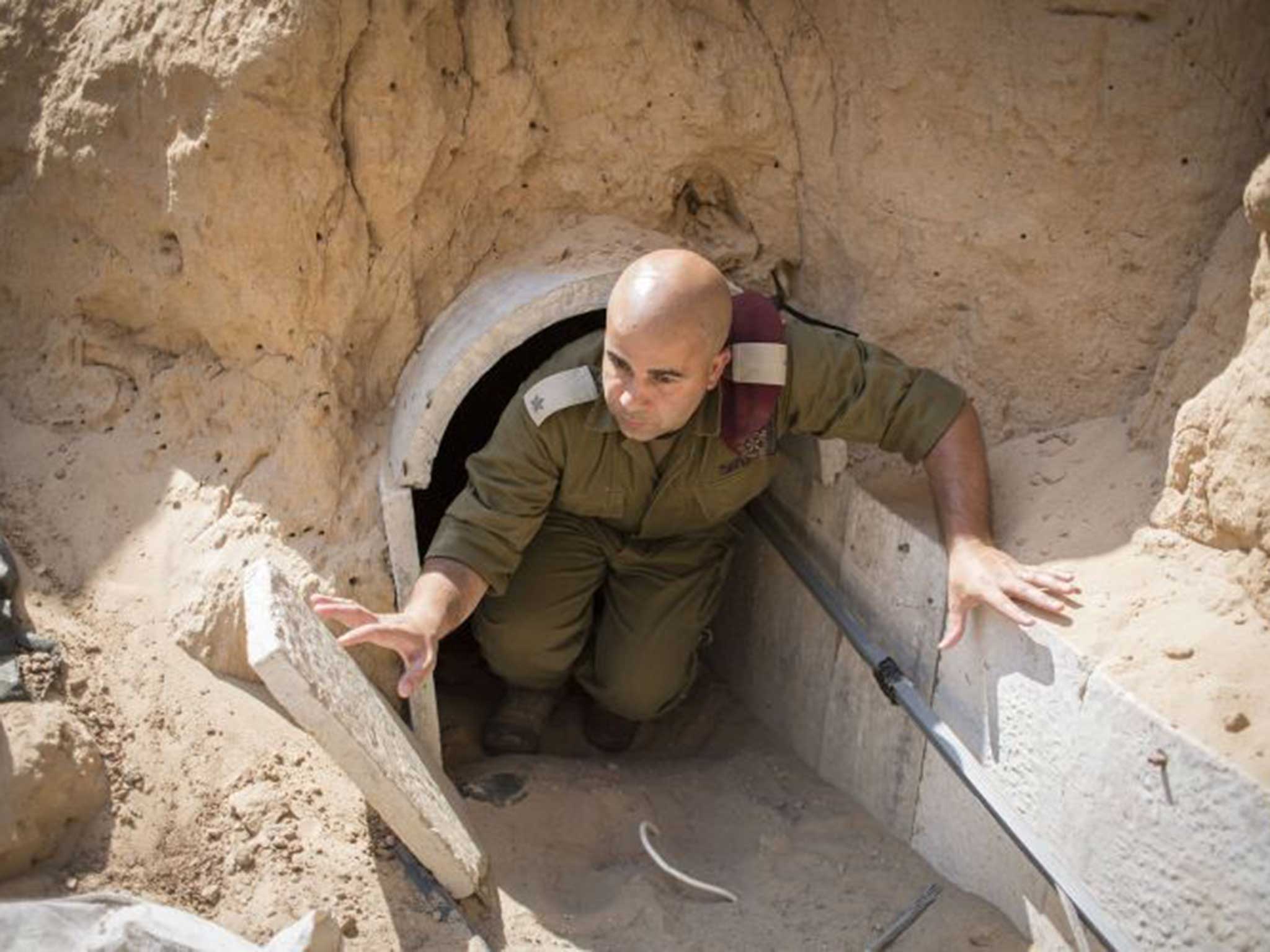Israel-Gaza conflict: Hamas' tunnels are just the latest play in this lethal game of cat-and-mouse
The tactic is as old as the hills, but tunnelling has a new relevance in the age of the drone attack

From Aleppo to Gaza, they are digging tunnels. In Aleppo, the Syrian army have dug down into the tunnels of their Islamist opponents; in Homs, they even dug counter-tunnels. In Gaza, the Israelis have blown up the underground earthworks of the Palestinians.
But a visit to the great Sheikh Najjar industrial estate north east of Aleppo – base for more than a year to the al-Qa'ida-Nusra-Islamic State forces fighting the Assad regime in Damascus – proves that underground warfare is in the blood of Islamist forces.
Dozens of miles of tunnels criss-crossed the now-captured fortress south of the Turkish border, in some cases wide enough for vehicles to be driven through. In the old city of Homs, which endured months of siege by the Syrian army, Sunni Muslim groups used mining drills to cut through the living rock beneath ruined apartment blocks. The tunnels of Gaza have been built and rebuilt — and rebuilt again — under Israel’s siege, complete with internal railway tracks and pre-stressed concrete walls and ceilings, a subterranean world created both for the transportation of food and weapons into the Palestinian enclave and for attacks – literally underground — against Israel.
There is, of course, nothing new in what Israeli prime minister Benjamin Netanyahu – with his usual facility for cliché – calls “tunnels of terror”. Tunnels have always provoked fear. The Romans were petrified of the tunnels constructed by the Jews in the great revolts in Judea and Samaria. The Crusaders and Saracens undermined each other’s castles by digging beneath the walls. In the Great War, as the world has been constantly reminded these past few weeks, the British and Germans tunneled and counter-tunneled each other beneath the battlefields of the Somme.

The huge British mine explosions at Messines in 1917 have been repeated in miniature in Aleppo this past year, when Nusra and other Islamist groups have dug beneath the Syrian government front lines and blown up military offices in the government-held part of the city. Syrian officers say that it was a mine shaft dug beneath the 13th century Omayad mosque in the city which brought the minaret crashing to the ground last year with the ‘vibration of an earthquake’. Civilians on the army side of the Aleppo front line – under the eyes of government militiamen — have been digging up the streets to prevent tunnelers from undermining their homes. Militias in the Damascus suburbs – perhaps because of the rocky terrain – vainly attempted to dig their own tunnels.
For years, the hundreds of tunnels of Gaza – those running between Egypt and the 141 square miles inhabited by 1.8 million besieged Palestinians – have been the capillaries of life for both civilians and fighters. Entire cars, live animals, beds, household goods and food – as well as rockets and ammunition – have passed through these often professionally-built transit routes, constantly bombed by the Israelis and, most recently, flooded with water by the Egyptian military. Hamas makes millions in taxes from their operation – another reason why the organization will fight for them to remain open.
Just why it took so long – in a Middle East laced with barbed wire frontiers, walls and checkpoints — for Muslim military forces to resort to tunnels, remains unclear. Al-Qa'ida’s cave tunnels at Tora Bora stretched up to 15 miles through the mountains outside Jalalabad, and the success of Osama bin Laden’s fighters in eluding their Russian – and later US – enemies, may have been an inspiration for those who followed them in Syria, even in Gaza. The Islamic faith may have played a role; as bin Laden himself was well aware, the Prophet Mohamed received his message from God in a cave. Light and darkness are constantly invoked in the Quran.
But the vast underground trench network built by the Iranian Revolutionary Guard Corps and army during the 1980-88 war against Iraq – battlefields which often resembled the killing fields of the 1914-18 war – may also have influenced the Muslim guerrillas of the Middle East. The tunnels which the Israelis uncovered stretching deep beneath their land border with Gaza appear to have been constructed with curved concrete walls remarkably similar to those built by the Iranians during their war against Saddam.
The same must surely apply to the warren of tunnels which the Syrian army have been discovering during their own battles with Islamists. In Homs, the underground passageways were groined through solid rock – the tunnelers obligingly wrote their names and their date of completion at the entrances — the direction changing course to avoid gas pipes and subterranean waterways. North east of Aleppo, the tunnels – in this case, built under al-Qa'ida’s direct control — were also connected with miles of deep trench-works lined with iron and sandbags, a replica of the Iran-Iraq war front lines.
One Palestinian official in Beirut, who remembers the weapons and makeshift rockets stored under the city during the 1982 Israeli siege, believes that the introduction of pilotless drone aircraft — used by the Americans in Afghanistan and Iraq, and by the Israelis over Gaza – drove fighters underground. “Conventional armies like daylight, guerillas prefer darkness,” he says. “When drones could see at night, we had to go beneath the earth.”
In Homs, the Syrians also used drones and, within the past two years, the Iranian-supported Lebanese Hizballah, which have been fighting alongside Assad’s forces in Syria, have launched their own drone flights over Israel, taking pictures of Israel’s own underground communications centre outside Haifa. Hizballah’s machines were made in Iran, which has itself seized US drone aircraft which crashed – or were shot down – over Iranian territory.
The more powerful that eye in the sky, it seems, the more tunnels will be dug. If, in the mantra of US forces, guerrilla war is asymmetrical, it is becoming ever more three dimensional.